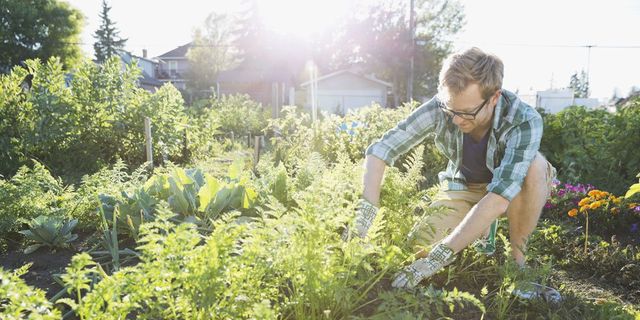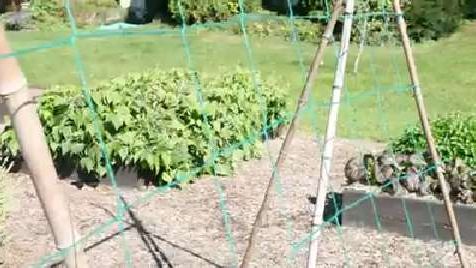Combining the best of natural landscaping and edible gardening, permaculture systems sustain both themselves and their caregivers. The ultimate purpose of permaculture—a word coined in the mid-1970s by two Australians, Bill Mollison and David Holmgren—is to develop a site until it meets all the needs of its inhabitants, from food and shelter to fuel and entertainment.
While it’s the rare home gardener who can follow permaculture principles to the ultimate degree, most can borrow ideas from the permaculture ethos with simple landscaping techniques based on production and usefulness.
(Whether you're starting your first garden or switching to organic, Rodale’s Basic Organic Gardening has all the answers and advice you need—get your copy today!)
Know your permaculture-recommended plants
Permaculture emphasizes the use of native plants or those that are well adapted to your locale. The goal here is to plant things you like, while making sure they have a purpose and benefit the landscape in some way. Plants such as fruit trees provide food as well as shade; a patch of bamboo could provide stakes for supporting pole beans and other vining plants. (Here's how to make a simple bamboo trellis.) Permaculture gardeners grow many types of perennial food plants—such as arrowhead, sorrel, chicory, and asparagus—in addition to standard garden vegetables.
Like all gardeners, permaculture enthusiasts love plants for their beauty and fragrance, but they seek out plants that offer practical benefits along with aesthetic satisfaction. Instead of a border of flowering shrubs, for instance, a permaculture site would make use of a raspberry or blackberry border. (Here’s how to grow your own raspberries.)
Know what plants to avoid
Disease-prone plants, such as hybrid tea roses, and plants requiring a lot of water or pampering are not good permaculture candidates. (Learn how crop rotation can help prevent pests and diseases, and improve soil quality.) Choose a native persimmon tree that doesn’t need spraying and pruning, for example, instead of a high-upkeep peach tree. Consider the natural inclinations of your site, along with the needs of its inhabitants, and put as much of your site as possible to use. Work with the materials already available rather than trucking in topsoil or stone. And remember that a permaculture design is never finished, because the plants within a site are always changing.
5 permaculture practices to start following now
There is no set formula for developing this type of permaculture garden design, but there are some permaculture best practices:
1. Copy nature’s blueprint and enhance it with useful plants and animals. Think of the structure of a forest and try to mimic it with your plantings. A canopy of tall trees will give way to smaller ones, flanked by large and small shrubs and, finally, by the smallest plants. Edge habitats, where trees border open areas, are perfect for fruiting shrubs, such as currants, and for a variety of useful native plants, such as beargrass (xerophyllum tenax), which is used for weaving baskets. Mimicking these natural patterns with permaculture provides for the greatest diversity of plants.
2. Stack plants into guilds. A guild includes plants with compatible roots and canopies that might be layered to form an edge. As you learn more about your site, you’ll discover groups of plants that work well together. For example, pines, dogwoods, and wild blueberries form a guild for acid soil.
3. Make use of native plants and others adapted to the site (but defintely not these plants).
4. Divide your yard into zones based on use. Place heavily used features, such as an herb garden, in the most accessible zones. (Here are 7 backyard weeds that are actually medicinal herbs in disguise.)
5. Identify microclimates in your yard and use them appropriately. Cold, shady corners; windswept spots in full sun; and other microclimates present unique opportunities. For instance, try sun-loving herbs like creeping thyme on rocky outcroppings; plant elderberries in poorly drained areas.
Related: 5 Ways Your Garden Can Support The Local Wildlife
Learn more about permaculture
Permaculture designers are now working to conceptualize and create entire permaculture communities that embody these permaculture concepts. So, if permaculture intrigues you, there is a wealth of online resources. Try Permaculture Institute, Edible Forest Gardens, and Crazy Rooster Farm as a start.
Related: 7 Secrets For A High-Yield Vegetable Garden, Even When You're Tight On Space














